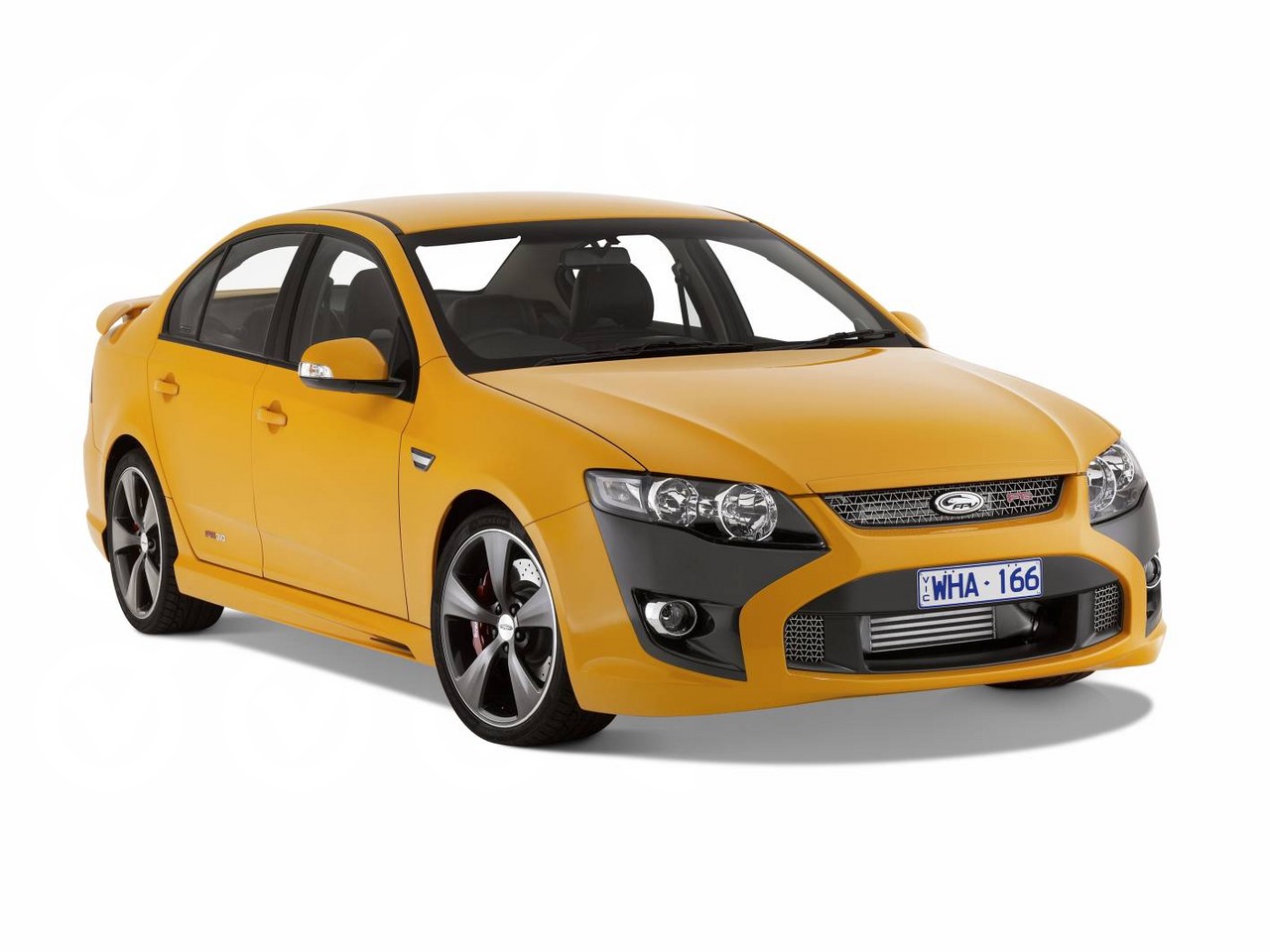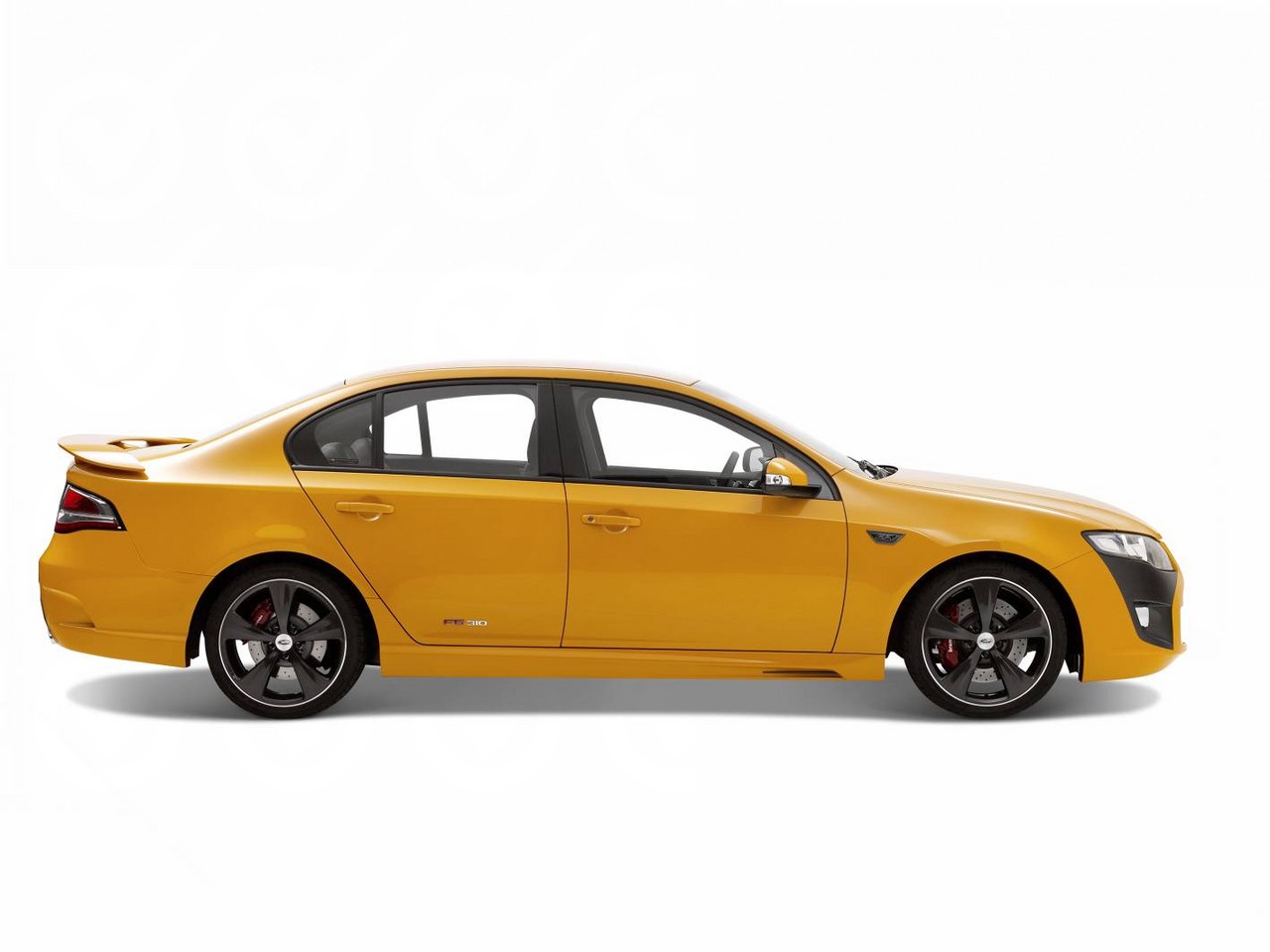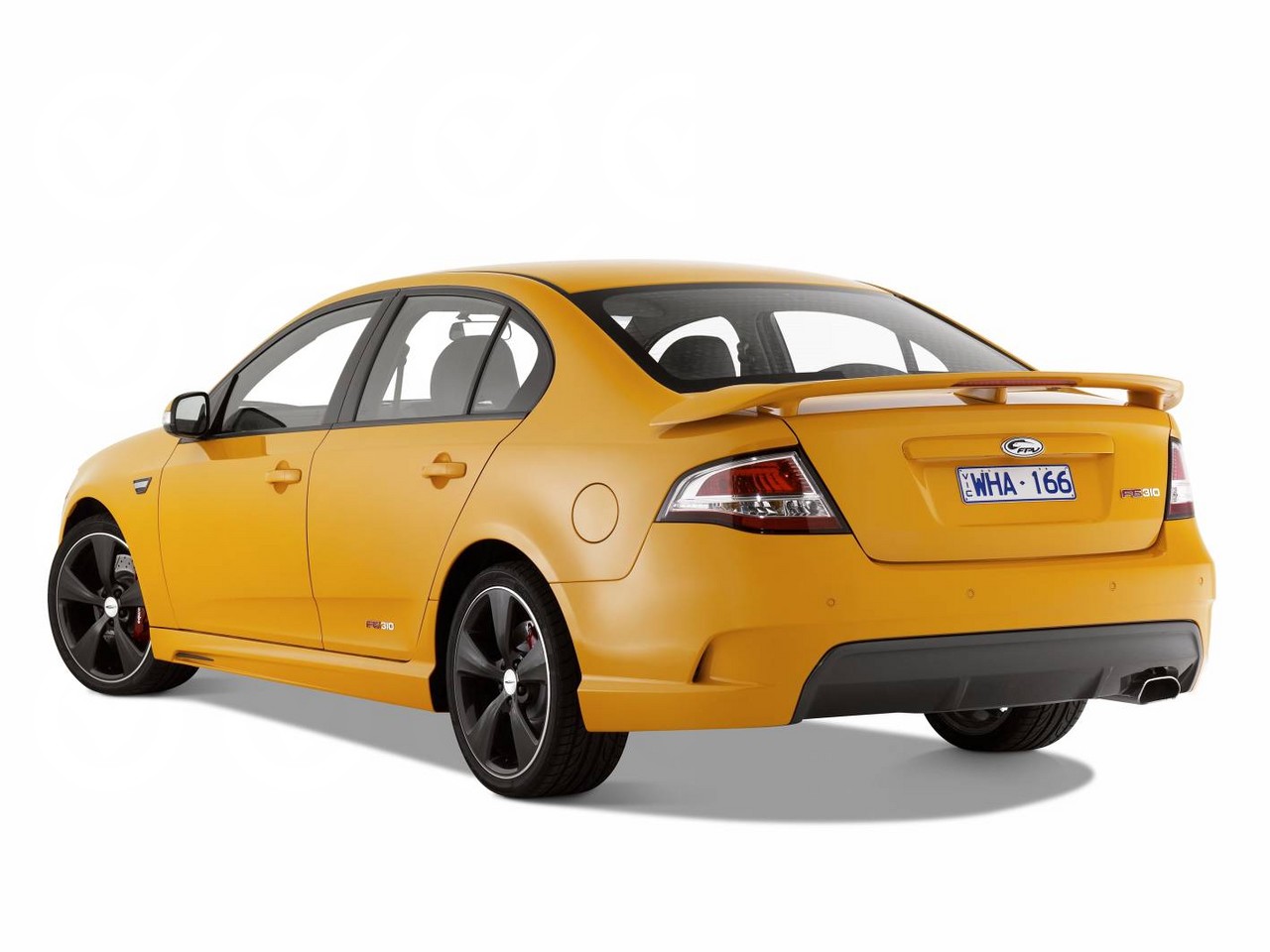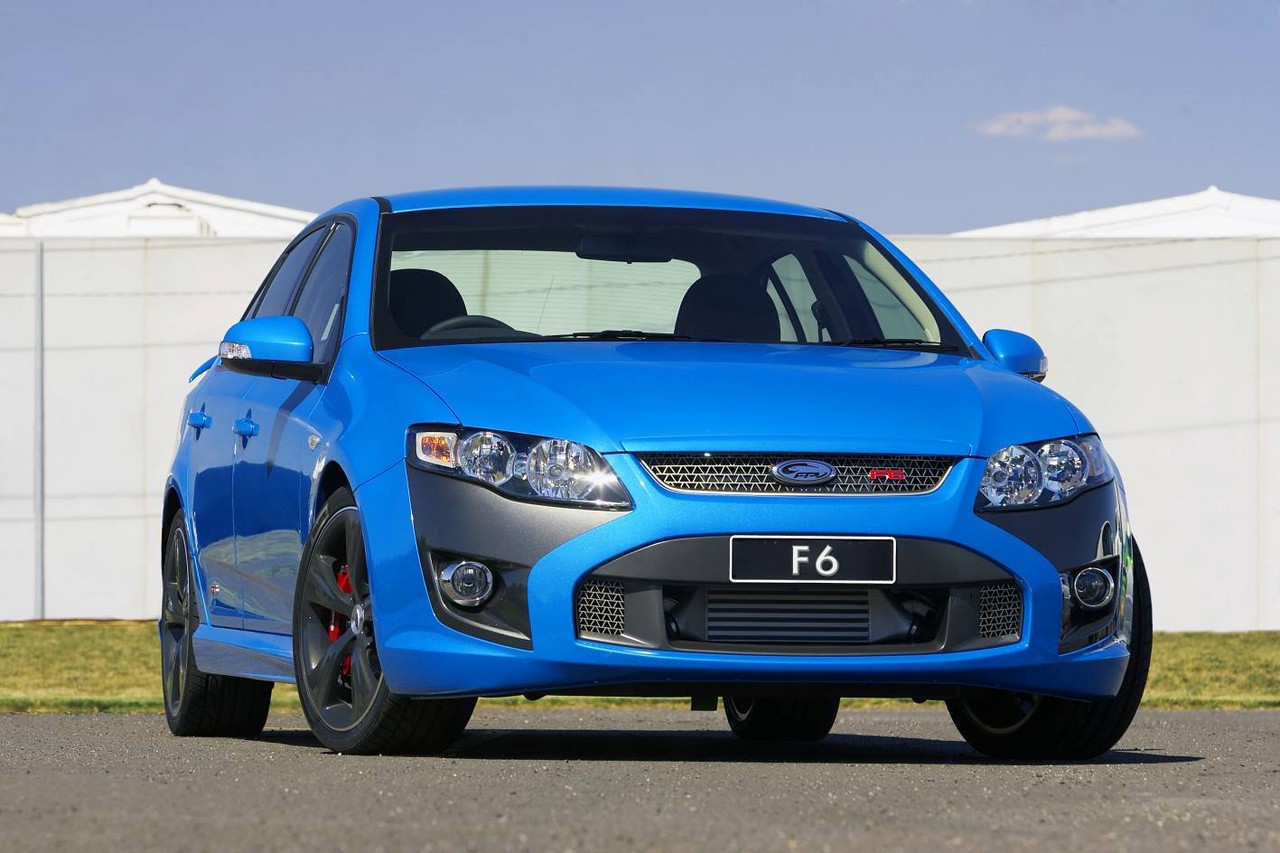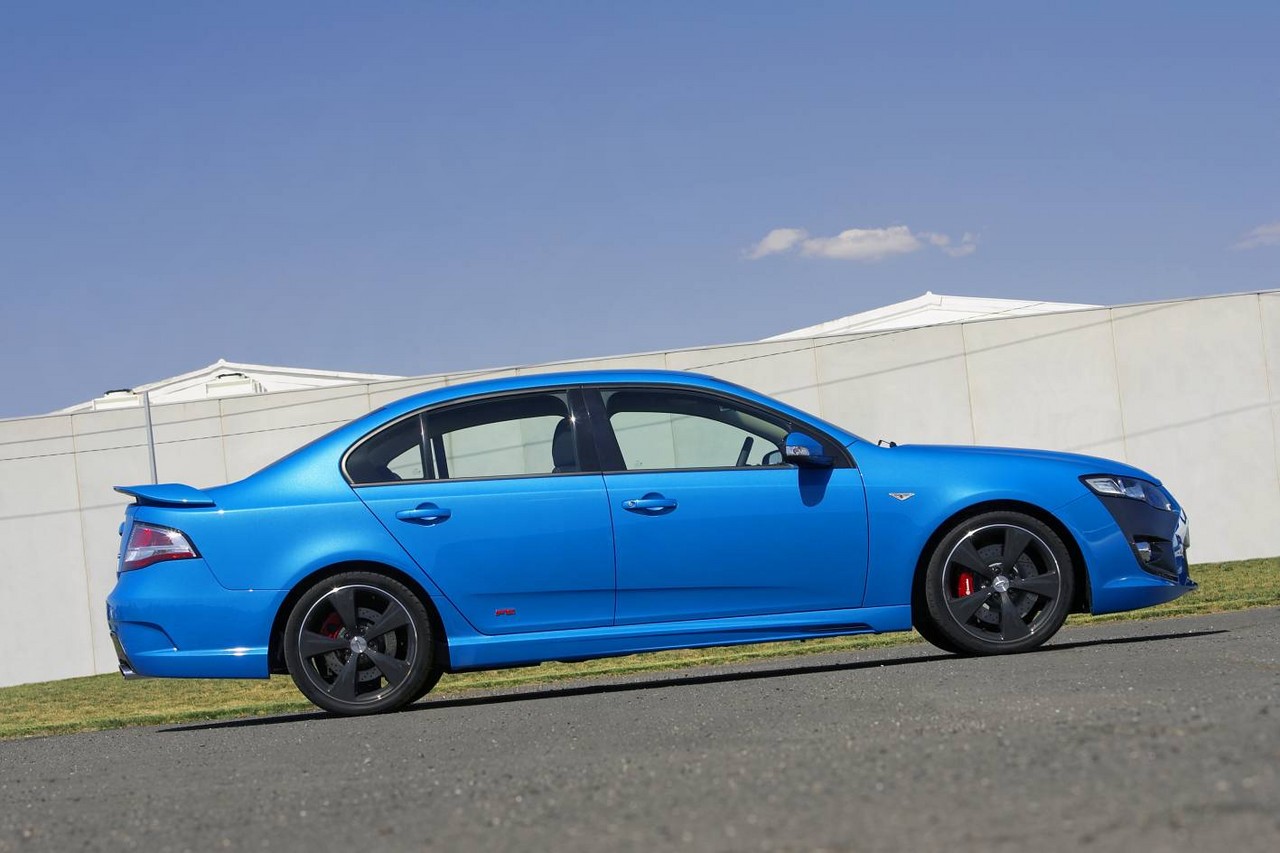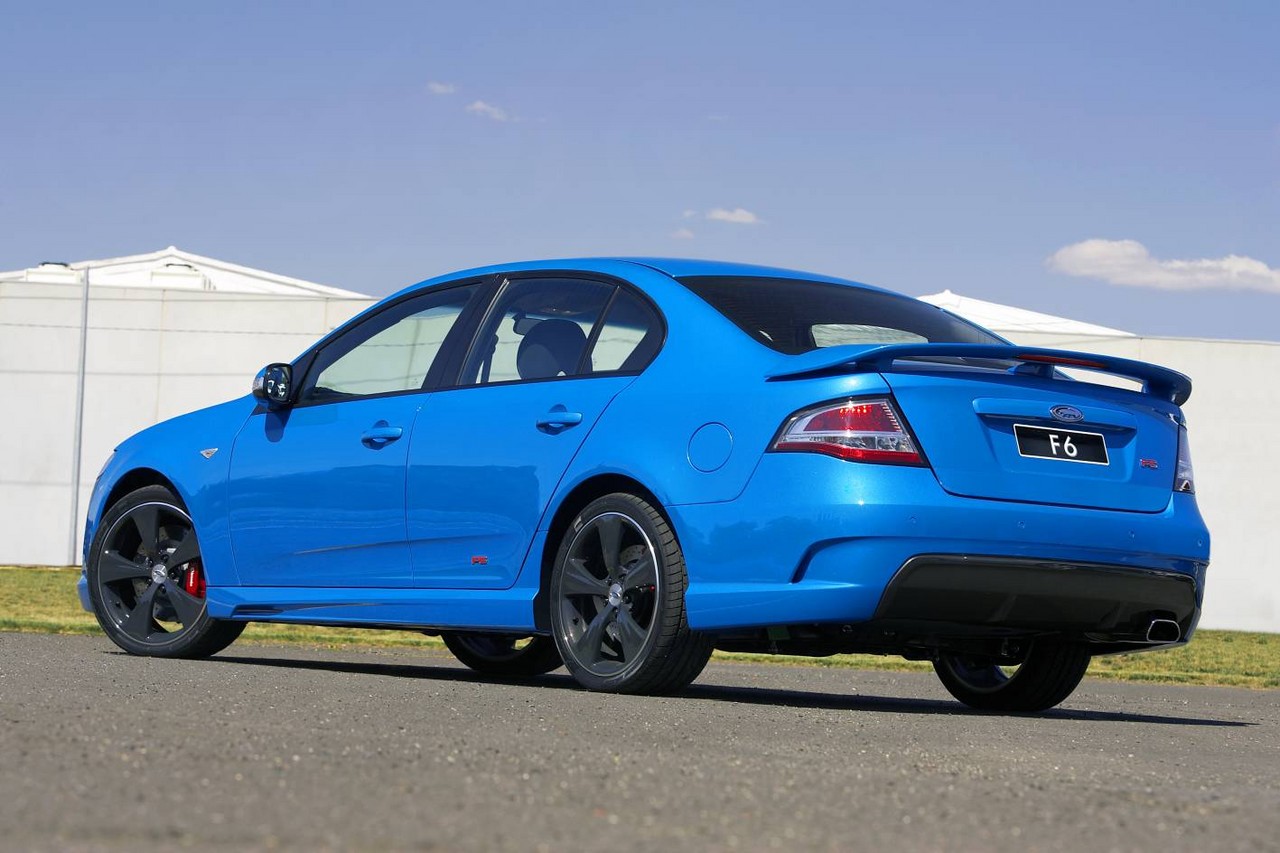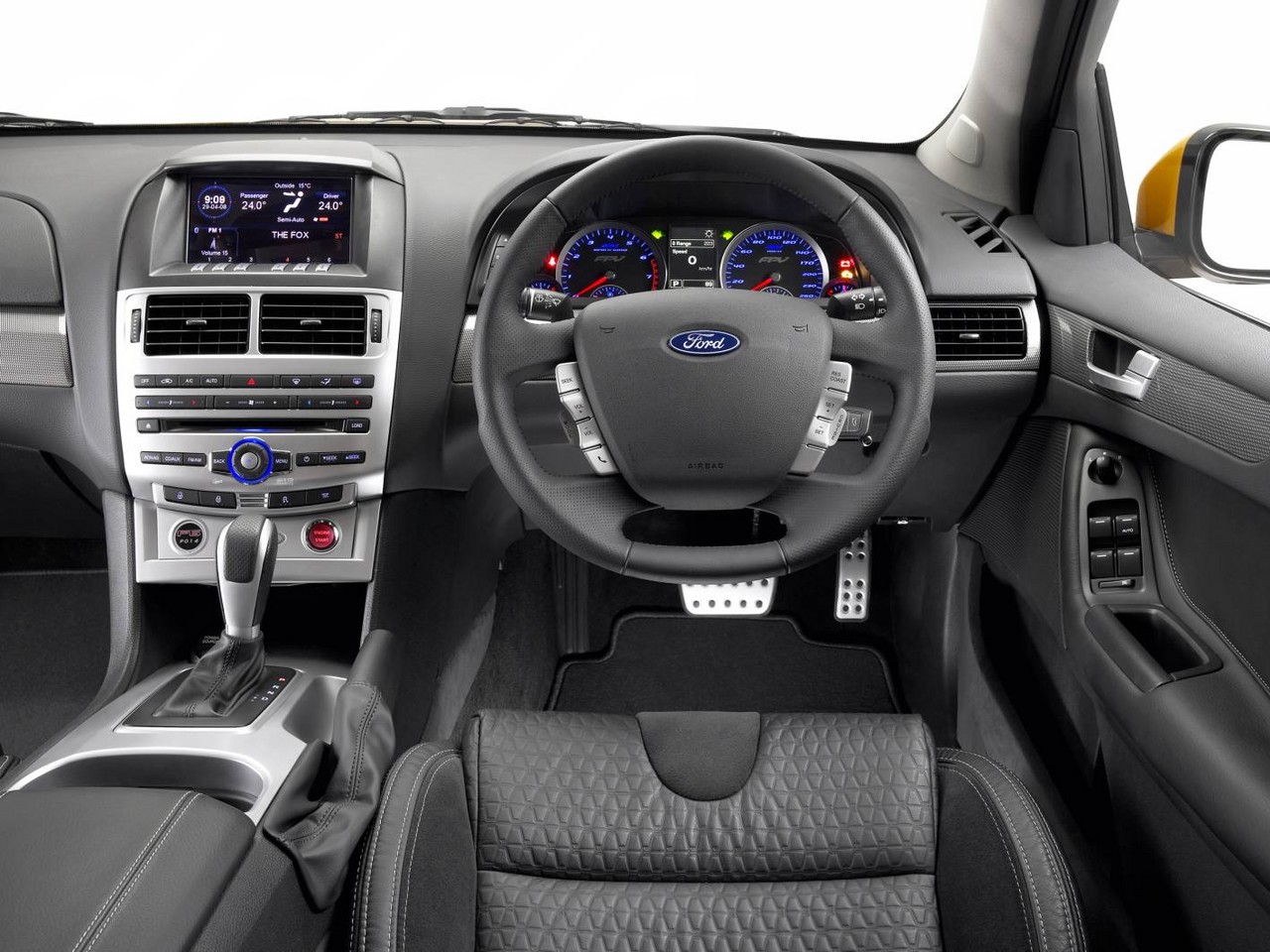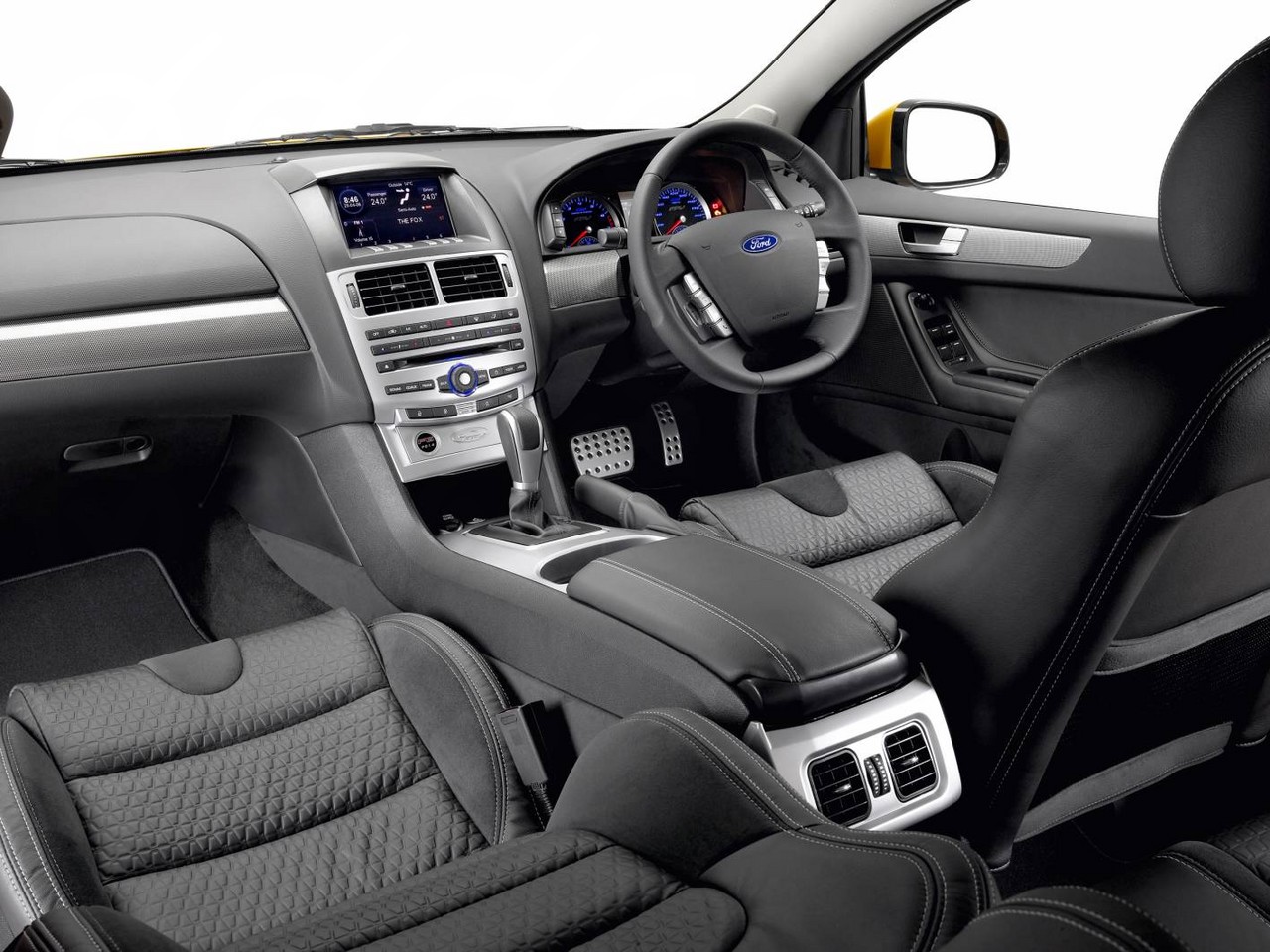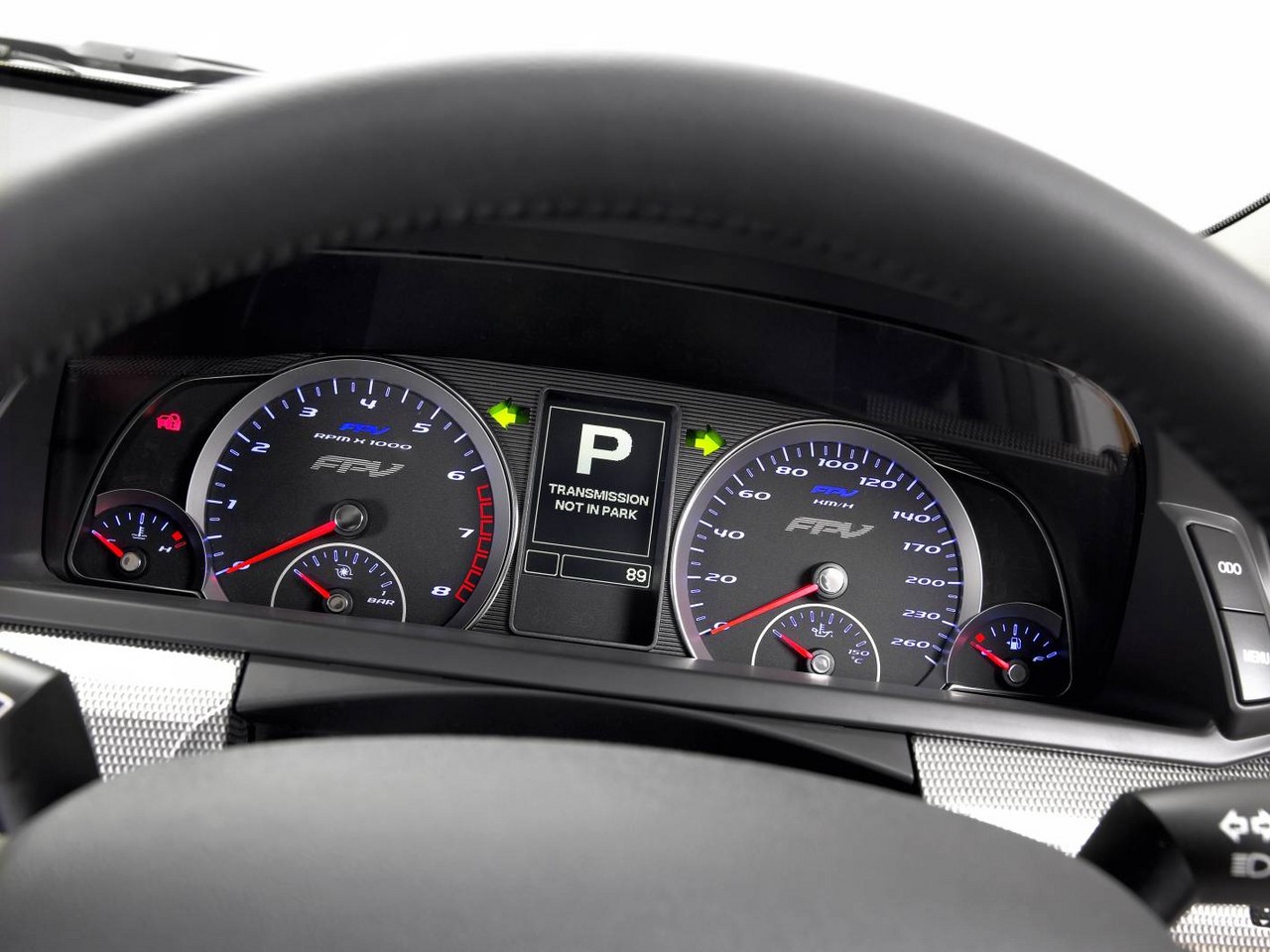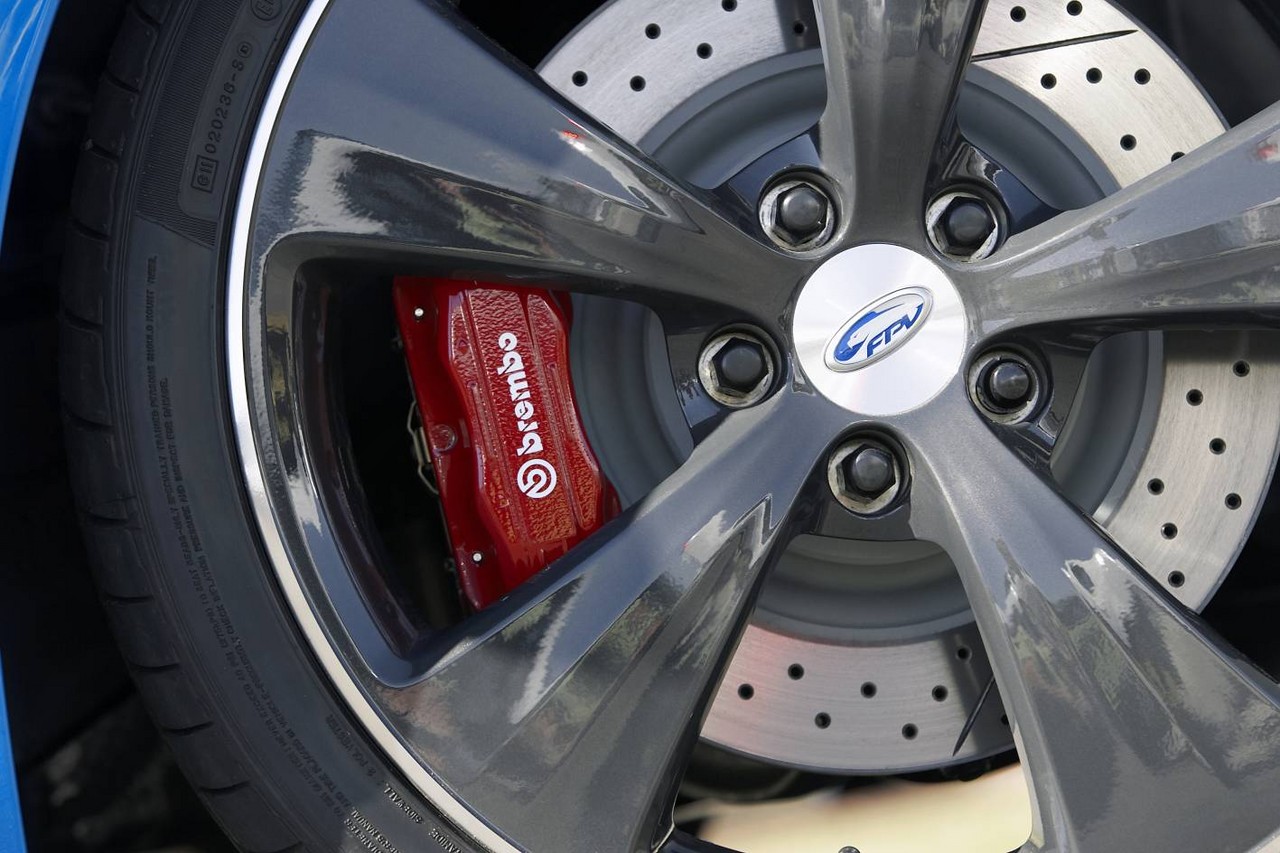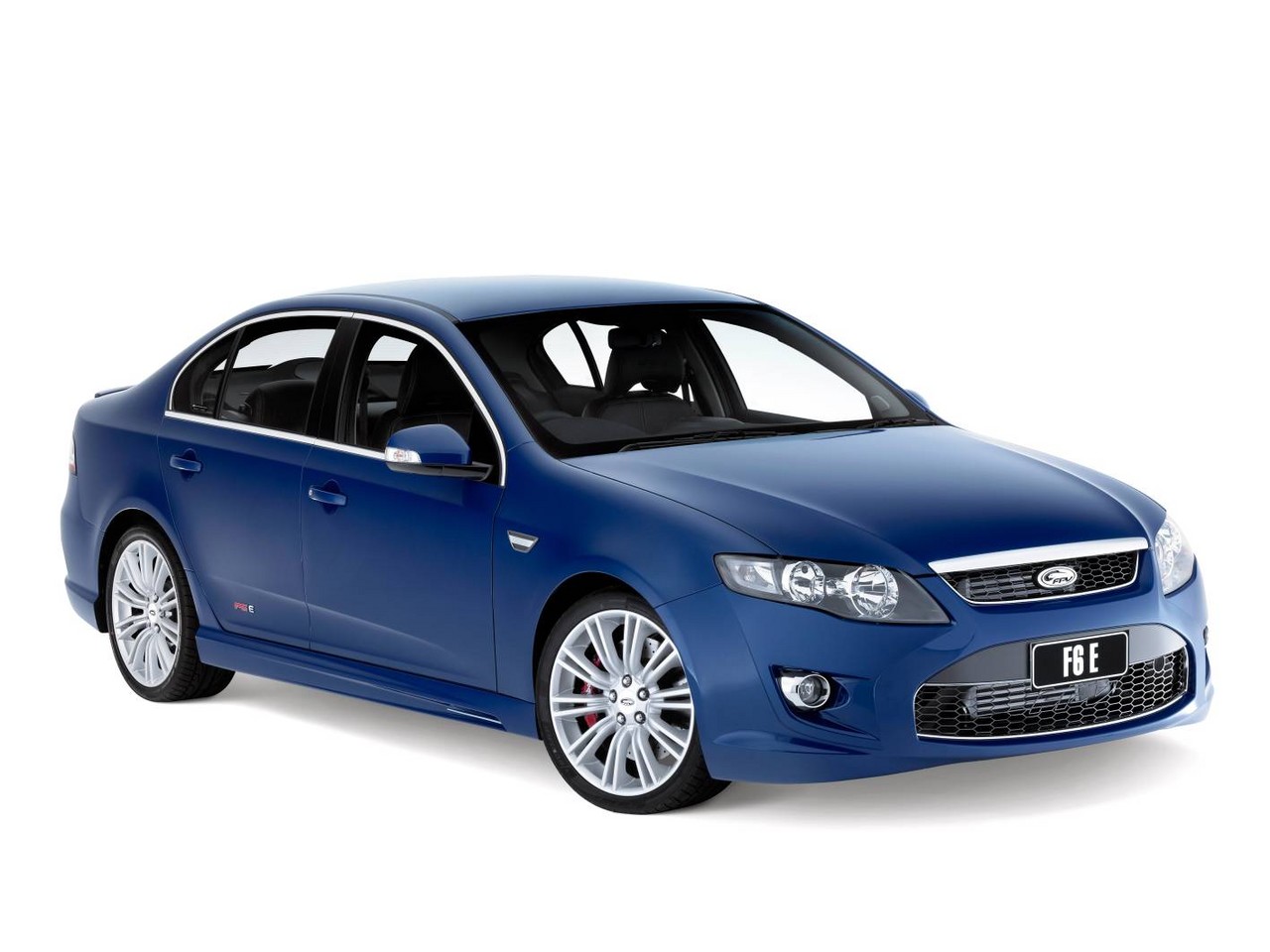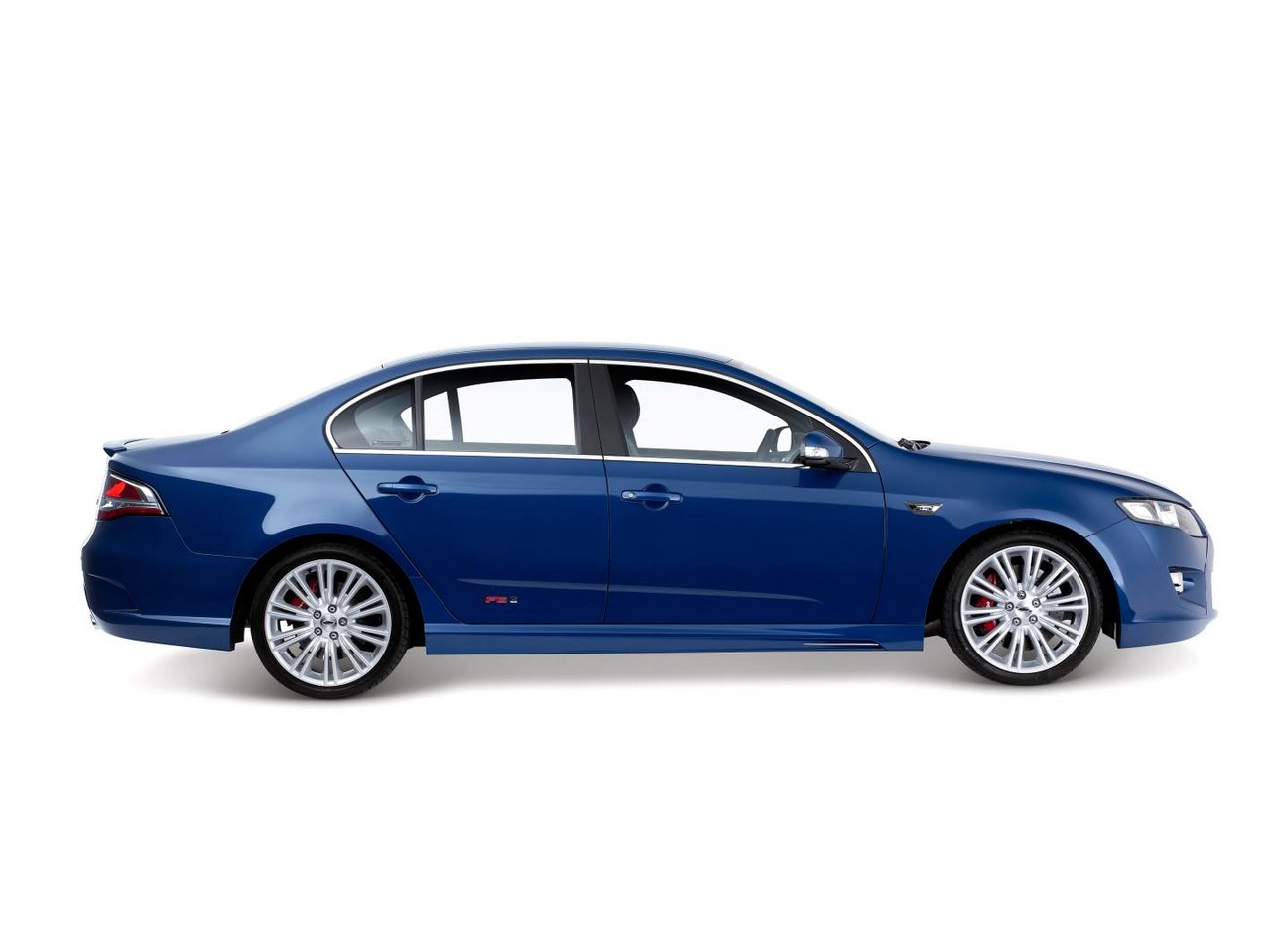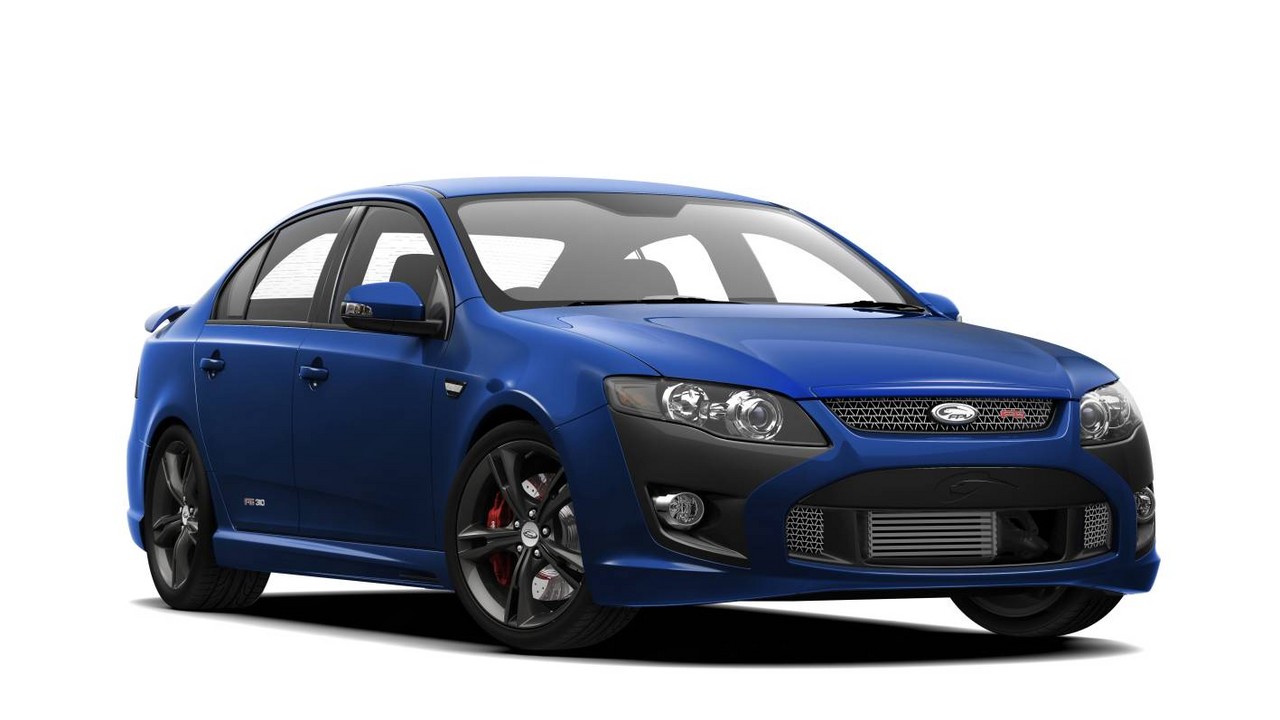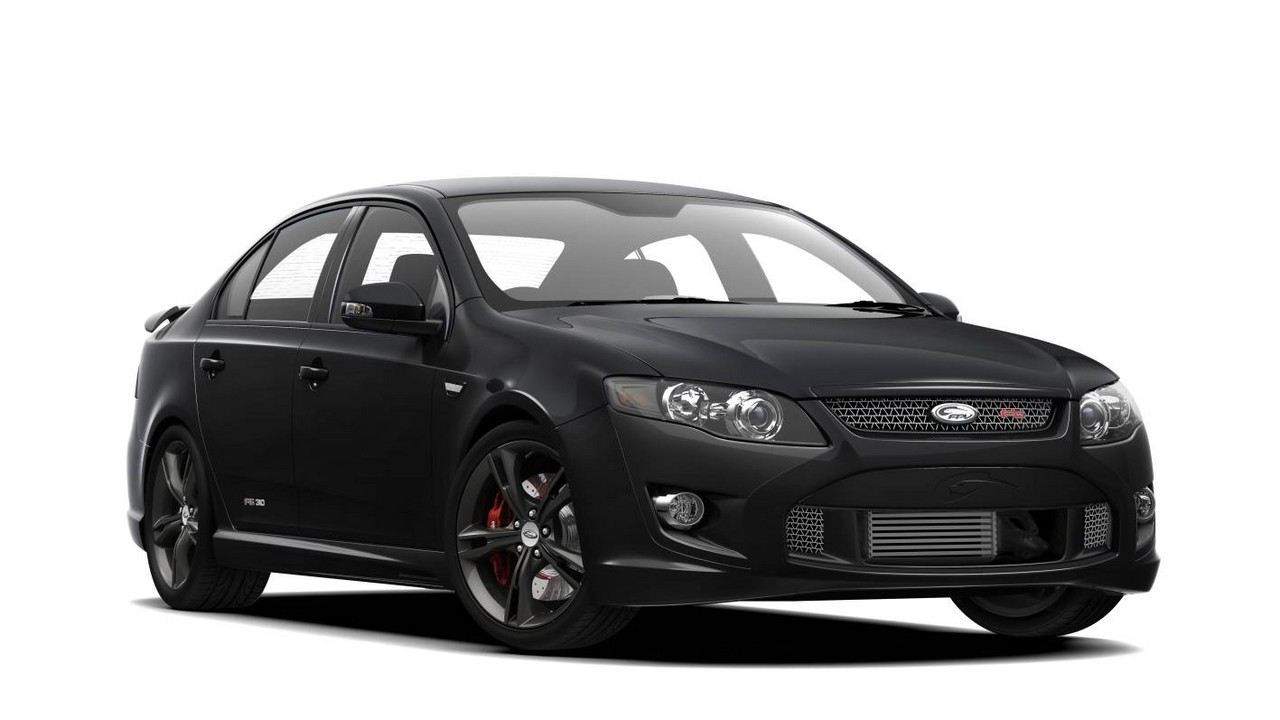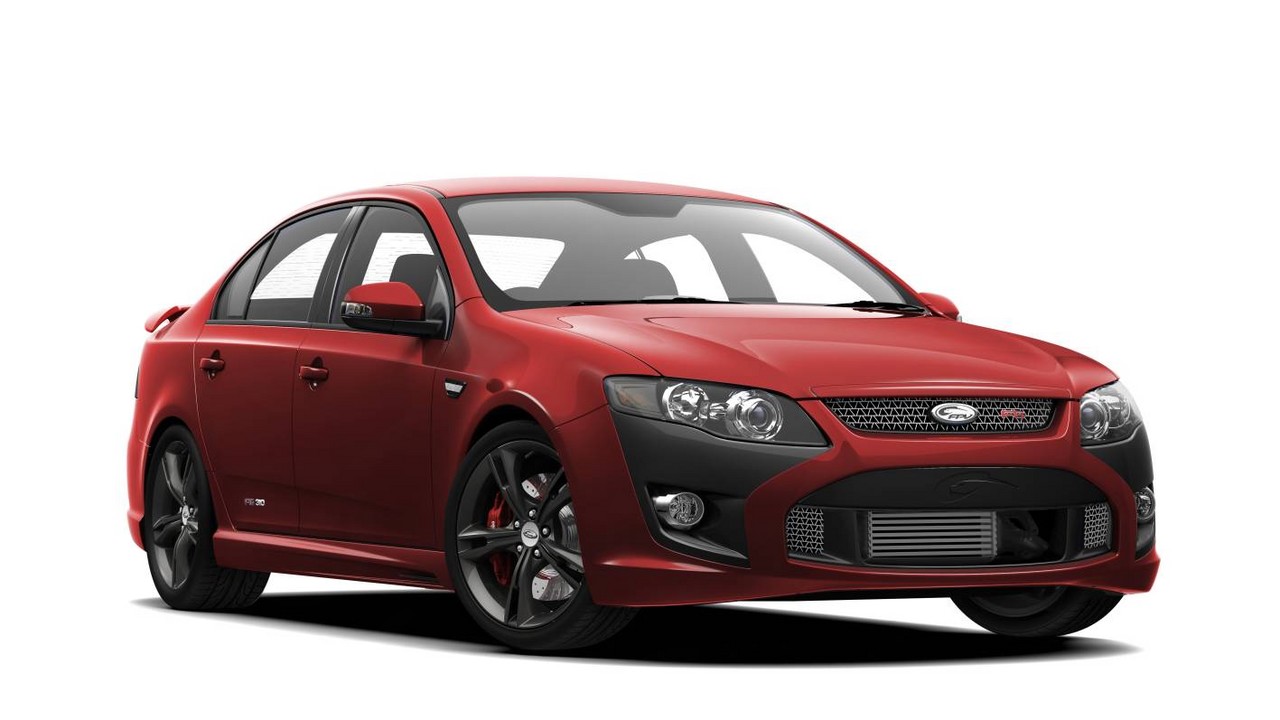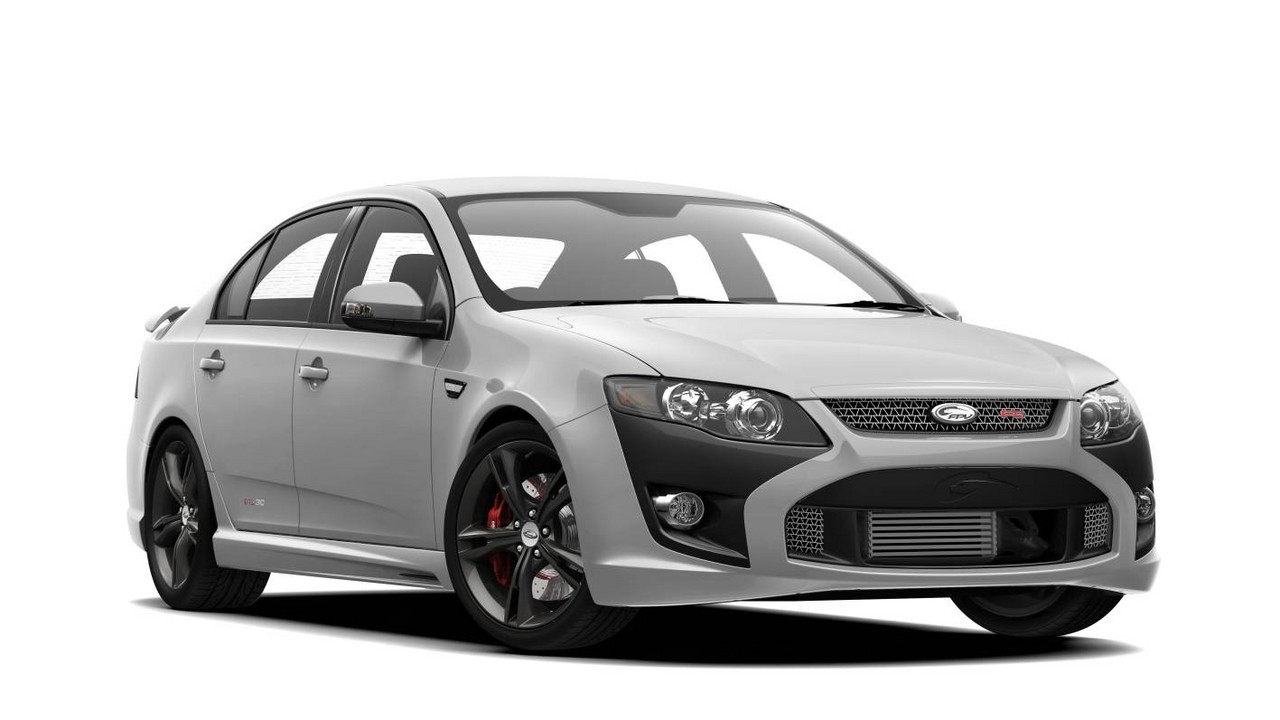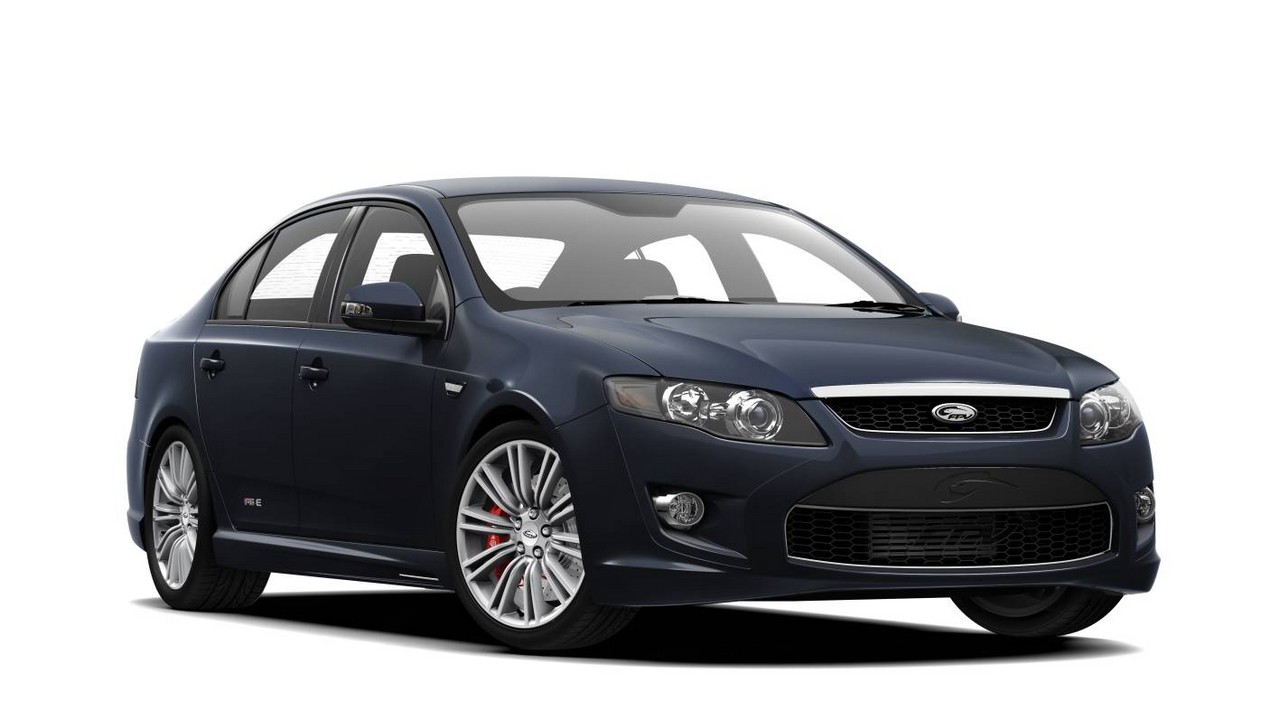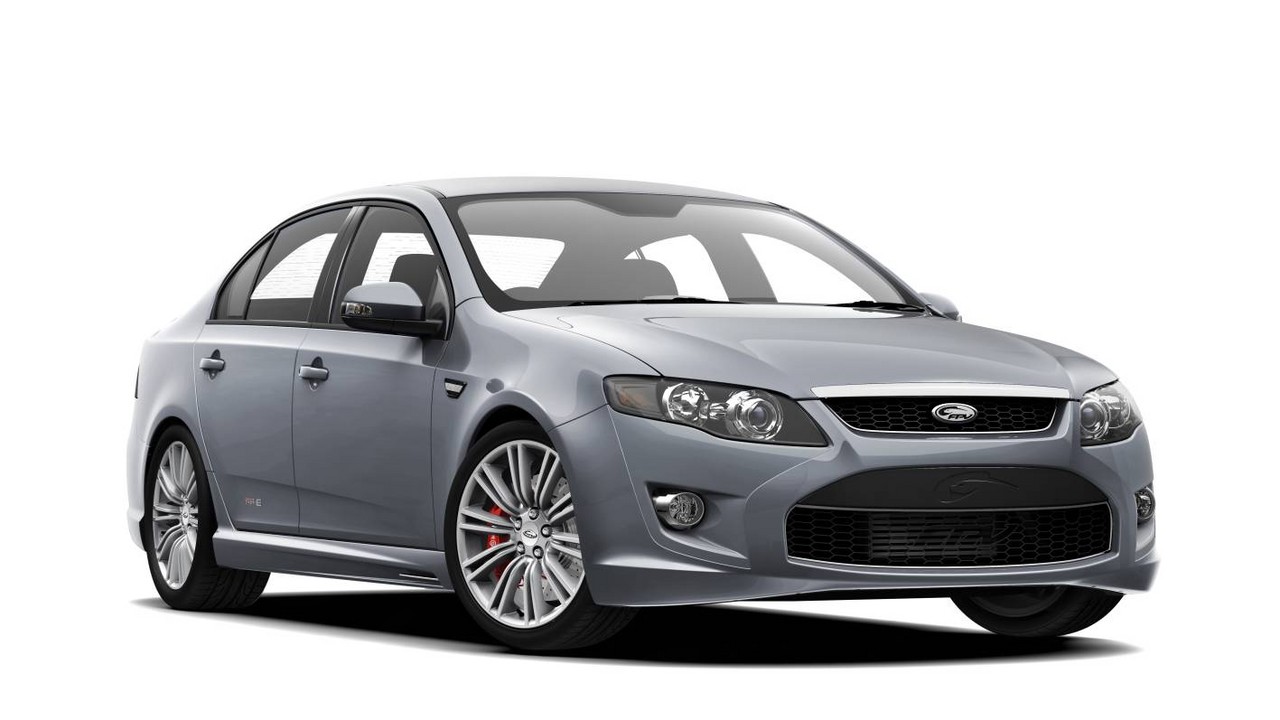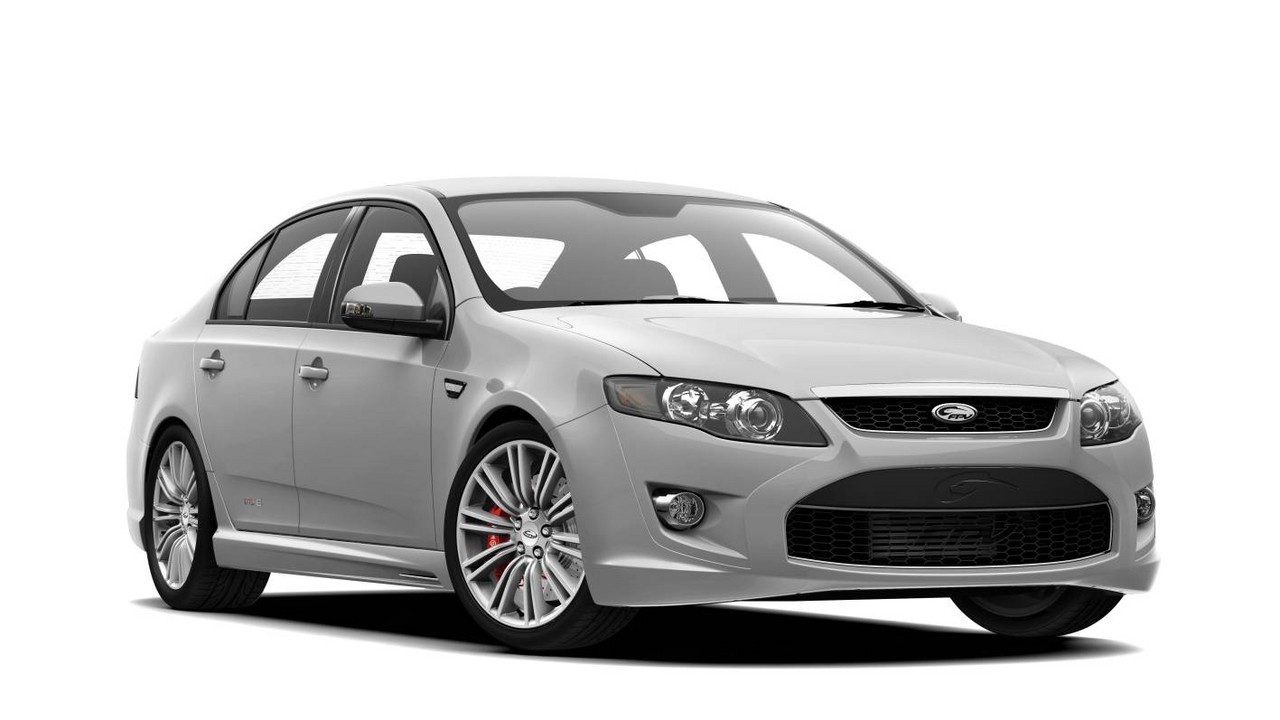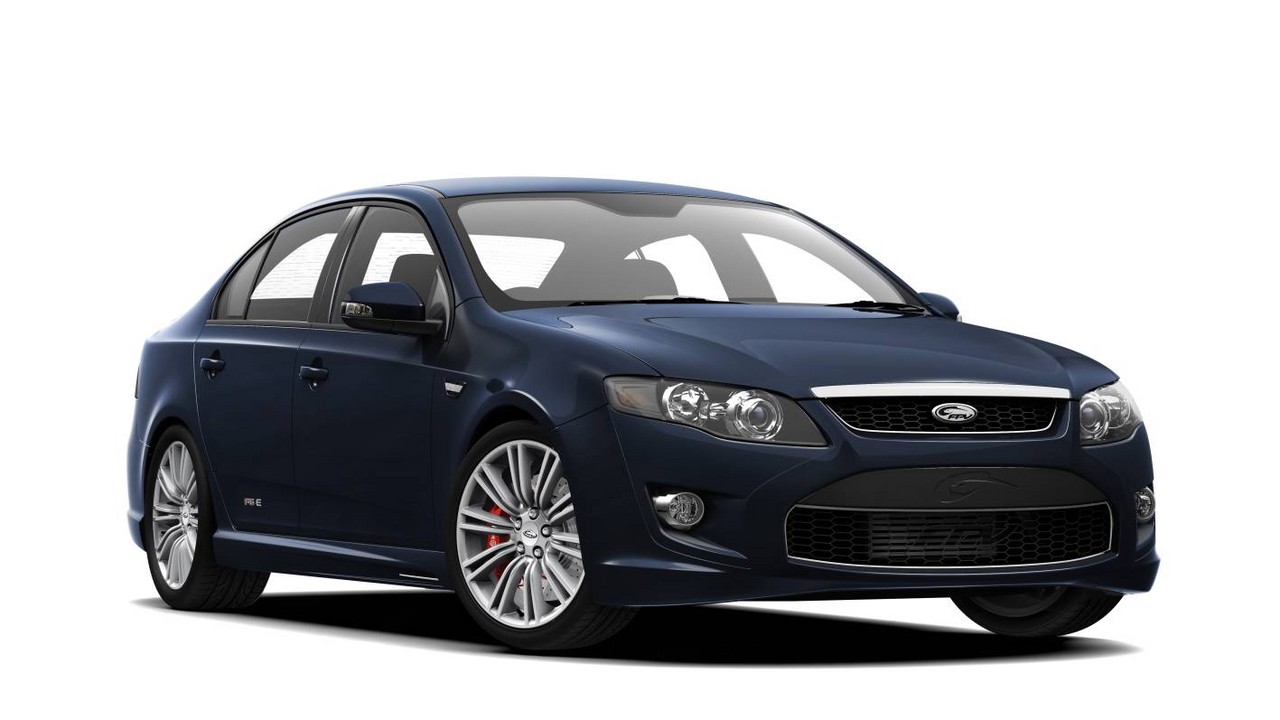
- Powerful 4.0-litre turbocharged I6 engine (310 kW and 565 Nm)
- Impressive dynamics
- Refined six-speed ZF automatic transmission
- Accurate, well-weighted steering
- Powerful Brembo brakes
- For ZF transmission, coolant lines in heat exchanger were susceptible to failure
- More turbo lag than FG Falcon XR6 Turbo
- Awkward driving position
- Prone to drivetrain clunks
- ‘Control Blade’ semi-trailing arm rear suspension inferior to VE Commodore-based four-link IRS
Review: FPV FG.I F6 and F6E (2008-11)
Overview
Released in May 2008, the FPV FG Mk.I (FG.I) F6 Series – initially consisting of the F6 and with the F6 E following in 2009 – were rear-wheel drive, performance sedans. Manufactured in Campbellfield, Victoria, the F6 Series were powered by 4.0-litre turbocharged six cylinder petrol engines that were mated to either six-speed manual or automatic transmissions.
FPV F6 310T engine
The FG F6’s FPV F6 310T engine had a cast iron block, a cast aluminium cylinder head, a Garrett GT35/76R turbocharger which had engine oil-lubricated and water-cooler bearings, an air-to-air intercooler, an electronic single bypass wastegate, double overhead camshafts (DOHC, simplex chain-driven), dual independent variable camshaft timing, four valves per cylinder, Duratec-style finger followers, a dual resonance inlet manifold, coil-on-plug ignition, electronic throttle control, twin knock sensors and a compression ratio of 8.47:1.
Compared to its FPV F6 270T predecessor, the FPV F6 310T engine had:
- Strengthened pistons and conrod assemblies;
- Revised camshaft timing;
- A new, higher efficiency Garrett GT35/76R turbocharger – developed for FPV – which had a larger compressor wheel, different compressor housing, an upgraded wastegate specification and increased boost pressure (0.91 bar, or 13.3 psi);
- A lower compression ratio (8.47:1, previously 8.7:1);
- A 22 per cent larger intercooler (by core volume) which provided a 45 per cent improvement in heat rejection and a 34 per cent reduction in pressure drop for higher air intake pressure;
- A new ‘low loss’ short path air intake system;
- A new exhaust manifold; and,
- Recalibrated engine management.
Transmissions
The FPV FG F6 was available with six-speed Tremec TR6060 manual or six-speed ZF 6HP26 automatic transmissions.
Replacing the Tremec T56 manual transmission, the Tremec TR6060 had triple synchromesh on first and second gears and double synchromesh on all other gears (including revrese) which reduced gear shift efforts and shift travel. The reduced shift travel also provided increased space for the use of larger, stronger gears for greater durability.
The FPV FG F6 was fitted with the high-performance ZF 6HP26 transmission which was rated for 600 Nm applications and had upgraded clutches with extra plates in the clutch packs. For the FG range, the 6HP26 transmission had a cylinder cut function whereby the fuel injectors would be deactivated during gearshifts to reduce shift times.
Development and dimensions
Developed in conjunction with the FG Falcon , the FPV F6 Series had:
- A stronger body structure which made increased use of high-strength steels and ultra high-strength Boron steel and included a new front subframe, additional reinforcement inside the front rails, new high strength floor cross members, transmission tunnel reinforcement and a larger, stronger B-pillar;
- New Virtual Pivot Control Link front suspension (described below);
- A forward-mounted, Y-shaped steering rack with variable-ratio steering gear;
- Upgraded static sealing and triple-sealed doors;
- Redesigned fuel tanks; and,
- A self-adjusting park brake.
Compared to their BF F6 Typhoon predecessors, the FG F6 Series were 39 mm longer (at 4956 mm), 2 mm narrower (1868 mm), 22 mm taller (1466 mm) and had 7 mm longer wheelbases (2836 mm).
Suspension
The FPV FG F6’s double wishbone front suspension had two lower ball joints that connected the separate lower arms to the suspension knuckle. These two lower links created a virtual pivot of the lower arm – hence the ‘Virtual Pivot Control Link’ name – and allowed the suspension to behave as though the lower pivot point was at the intersection of the two arms. Due to the use of aluminium and high strength steels, the Virtual Pivot Control Link suspension was 22 kg lighter than that in the BF F6 Typhoon .
The FG F6’s independent rear suspension (IRS) had three control arms:
- A forged upper control arm;
- A stamped front lower control arm; and,
- A stamped rear lower control arm.
Each control arm had a cross axis ball joint on the wheel assembly end and was attached to the subframe and knuckle. Furthermore, the ‘Control Blade’ was a stamped trailing arm which provided lateral support and acted as a vertical pivot point.For the FG F6, the roll centre height was increased to reduce in-corner roll and improve straight line stability, while toe-angle was revised to improve steering feel and stability.
The FPV F6 range had Sachs mono-shock dampers front and rear.
| Engine | Years | Trans. | Peak power | Peak torque | |
|---|---|---|---|---|---|
| F6 | 4.0-litre F6 310T turbo petrol I6 | 2008-11 | 6sp auto, 6sp man. |
310 kW at 5500 rpm | 565 Nm at 1950-5200 rpm |
| F6 E | 4.0-litre F6 310T turbo petrol I6 | 2009-11 | 6sp auto |
Safety equipment
Standard safety equipment for the FPV FG F6 included dual front airbags, front side airbags, full-length curtain airbags, ABS, electronic brake force distribution, brake assist, electronic stability control, traction control and front seatbelts with pretensioners.
Brakes
The FPV F6 had 355 mm by 32 mm cross-drilled and ventilated front brake discs with four-piston Brembo calipers and 328 mm by 26 mm cross-drilled and ventilated rear discs with single-piston calipers.
The F6E, however, had 355 mm by 32 mm cross-drilled and ventilated front brake discs with six-piston Brembo calipers and 330 mm by 28 mm rear discs with four-piston Brembo calipers.
Features
Standard features for the FPV FG F6 included 19-inch alloy wheels with 245/35 ZR19 Dunlop Sport Maxx tyres, a seven speaker sound system with a six-disc CD player and auxiliary inputs (MP3/iPod), dual zone climate control air conditioning, a seven-inch colour display, four-way power adjustable driver’s seat, front seat adjustable lumbar support, cruise control, Bluetooth connectivity, front fog lamps, rear parking sensors, automatic headlights, remote central locking, tilt and reach adjustable steering wheel, multi-function leather-wrapped steering wheel, power windows and mirrors, 12 volt power outlets, a trip computer and an immobiliser.
The F6 E was further equipped with leather seats, a six-way power adjustable driver’s seat with memory settings, a rear vision camera, FPV floor mats, power adjustable front pedals (automatic models only) and woodgrain interior trim.
Both the F6 and F6E were fitted with a limited slip rear differential as standard.
Brochures
- Brochure: FPV FG.I F6, FG.I F6 Ute and SY F6X (January 2009)
- Brochure: FPV FG.I Range (October 2010)
Related links
Review: FPV FG.II F6 and F6E (2011-14)
Overview
Released in December 2011, the FG Mk.II (FG.II) F6 and F6 E introduced subtle interior and exterior changes. Inside, there was a new Interior Command Centre (ICC) with an eight-inch colour touchscreen infotainment system and auxiliary USB input for the use of memory sticks, flash drives and external powered hard drives with memory support up to 1TB.
Visually, the FG.II F6 and F6 E could be identified by their new front lighting package with ‘precision design’ projector headlights and black bezels; the F6 was also fitted with five-spoke Graphite alloy wheels.
| Engine | Years | Trans. | Peak power | Peak torque | |
|---|---|---|---|---|---|
| F6 | 4.0-litre F6 310T turbo petrol I6 | 2011-14 | 6sp auto, 6sp man. |
310 kW at 5500 rpm | 565 Nm at 1950-5200 rpm |
| F6 E | 4.0-litre F6 310T turbo petrol I6 | 2011-14 | 6sp auto |
Features
Standard features for the FPV FG.II F6 were extended to include a reversing camera (previously limited to the F6 E).
The FG.II F6 E received a satellite navigation system which included Traffic Message Channel (TMC), evaluation for the most economical, shortest and quickest routes, 2D and 3D map modes, over-speed and speed camera warnings, places of interest, street house numbers, advanced lane guidance and signpost information and ‘junction view’ graphical representations of the road.
Brochures
Related links
